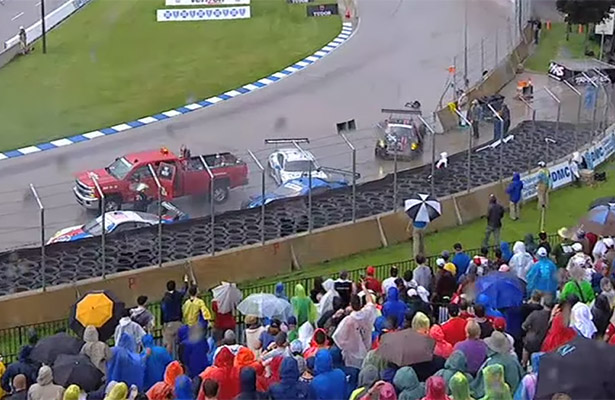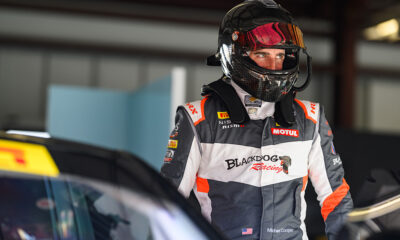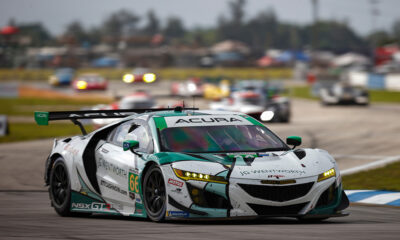
There’s no question that motorsports is dangerous. But oftentimes we’re only reminded of that when tragedy strikes.
That nearly happened last weekend in Detroit, when a sudden downpour sent a TUDOR United SportsCar Championship car barreling into a parked safety truck post-race, injuring one worker.
It came just two weeks after a near-miss in the Pirelli World Challenge race at Canadian Tire Motorsport Park, where a safety truck crossed the track in green flag conditions in an attempt to retrieve a stationary car.
In a day and age where safety should arguably be a championship and circuit’s top priority, how did these two incidents, from different North American sports car racing series and with different safety teams and at different tracks, have occurred?
More importantly, what can be done to prevent similar incidents from happening again?
A number of elements were at play in Detroit.
It was the closing stages of a 100-minute sprint race, on damp and increasingly wet and slippery street circuit, when Jan Heylen’s No. 58 Wright Motorsports Porsche stopped just past the start/finish line, on the outside of Turn 1.
With roughly two minutes left on the clock, IMSA elected not to throw a full-course caution and instead signal a local yellow. Heylen remained in the car, while a safety truck was called onto the circuit moments after Prototype winner Dane Cameron took the checkered flag in pouring rain.
That’s where an-out-of-control TRG-AMR Aston Martin of James Davison slammed into the rear of the safety truck, lifting it up off its wheels, before coming to rest behind Heylen’s stricken Porsche, with two other GTD cars sliding in as well.
A track safety worker sustained broken ribs, a collapsed lung and a non-operative injures to his spleen and kidney in the incident, while another worker was evaluated and released from the trackside medical center and went on to work the IndyCar race the following day.
According to a statement from IMSA, they have launched a comprehensive review in collaboration with the Detroit Grand Prix to determine the facts of what occurred.
“Safety is and always will be the No. 1 priority at IMSA. We are confident in the professional application of the response protocols at our events, including the one held this past weekend in Detroit,” the statement from IMSA read.
“Once the review is completed, we will use those findings to help us in our ongoing objective to protect drivers, crew members, officials and fans.”
While the Detroit incident occurred post-race, under what’s understood to have been normal operating procedure from race control, the incident just two weeks earlier at CTMP involving another safety truck could be interpreted as a different situation altogether.
Bill Ziegler’s Turner Motorsport BMW came to a halt on the inside of Turn 1 following the start of the World Challenge race, prompting a safety truck, located on the outside of the circuit, to cross the racing line while under green flag conditions.
The wrecker made it across the track with less than two seconds to spare before Johnny O’Connell and the rest of the leaders came by on their second lap. It took several laps for a Full Course Caution to be called, once it became apparent the vehicle was unable to remove the car.
A statement from World Challenge said a local yellow was issued during this process, although judging by the footage, none of the leaders appeared to slow down from the near-miss, which could have had catastrophic implications.
“Race Control issued a local yellow and [the] track safety crew thought that a ‘wrecker’ could safely remove the disabled car from the inside of the track. When it was determined the wrecker couldn’t safely remove the car a full course yellow was called,” the statement from World Challenge read.
While nobody was injured at CTMP, both incidents have raised questions and concerns over what could have been done to prevent them from occurring in the first place.
Both series currently rely heavily on track-based safety personnel, which played keys roles in the documented incidents. IMSA previously employed a full traveling safety team in the American Le Mans Series.
With investigations still ongoing, at least on the Detroit incident, it’s unclear if a traveling safety team would have had a different outcome, particularly if the call to deploy the truck was still made from race control.
The decision to throw a full-course caution, prior to either safety trucks entering the track, would have likely prevented both incidents, particularly in World Challenge’s case, where the truck sat on a hot track for some time before action was taken.
A revised caution procedure altogether, such as the ‘Full Course Yellow’ format used in the FIA WEC, where all cars immediately slow to 60 km/h on track without the use of a safety car, could have slowed the field and returned to racing much quicker than a traditional caution period.
The FIA WEC implemented the ‘FCY’ procedure one week after Jules Bianchi’s accident in the Japanese Grand Prix, where the Frenchman slammed into a crane that was pulled out to retrieve another F1 car while under a local yellow on a wet track.
Bianchi, who sustained life-threatening head injuries, remains in an unconscious state nearly eight months after the accident.
While there luckily hasn’t been an accident of that magnitude in North America yet, the unrelated incidents in the continent’s two top sports car series sends a major wake-up call to all those involved.
Safety, whether it be for a driver, spectator or track worker, should remain the top priority and we have to hope that lessons have been learned and additional measures will be taken to ensure a safe sport for all.
The views and opinions expressed on this web site are solely those of the original authors and other contributors. These views and opinions do not necessarily represent those of Sportscar365.com, John Dagys Media, LLC and/or any/all contributors to this site.

























